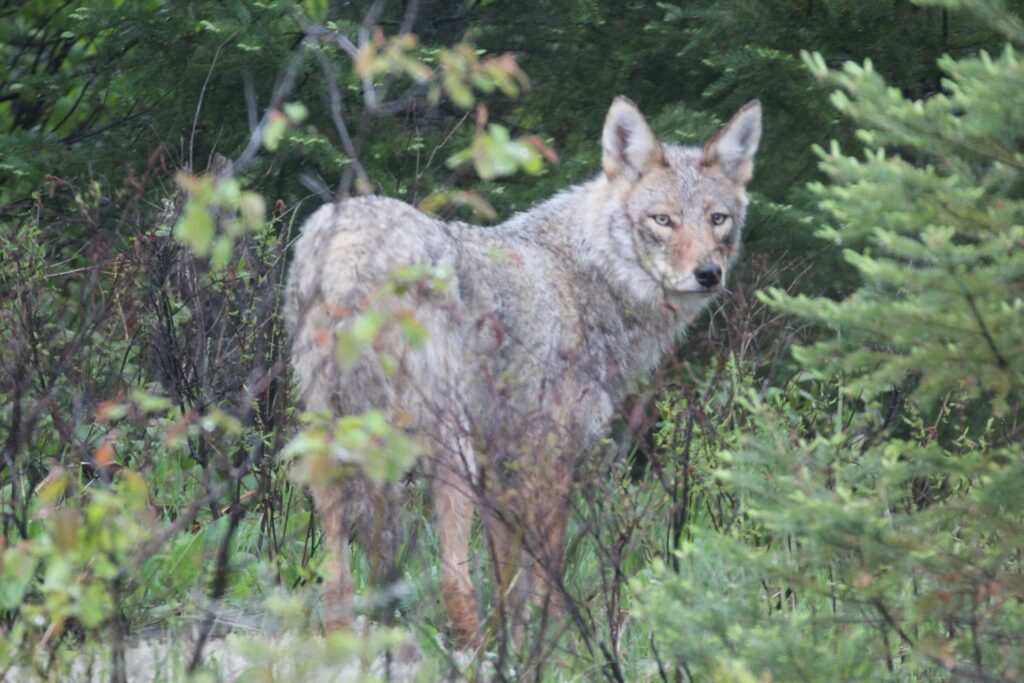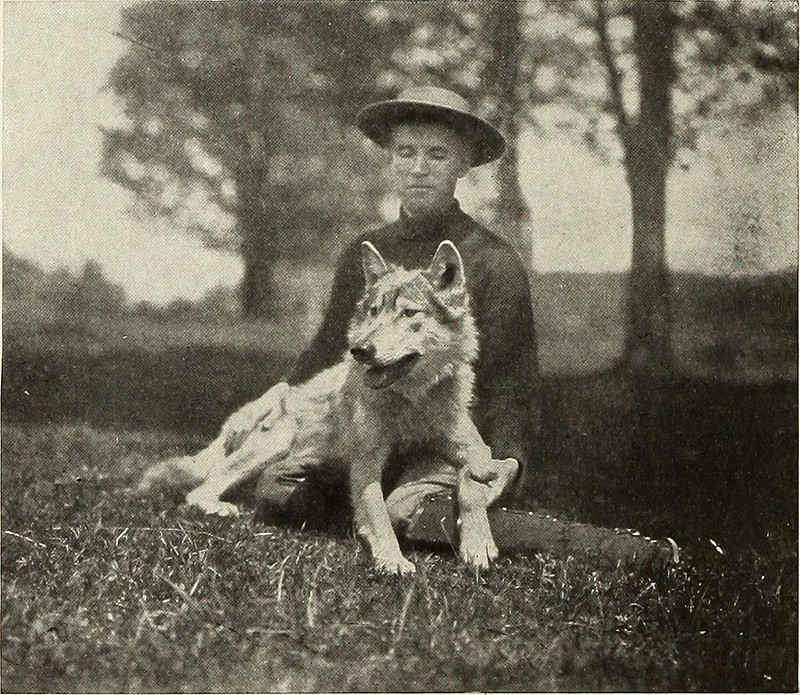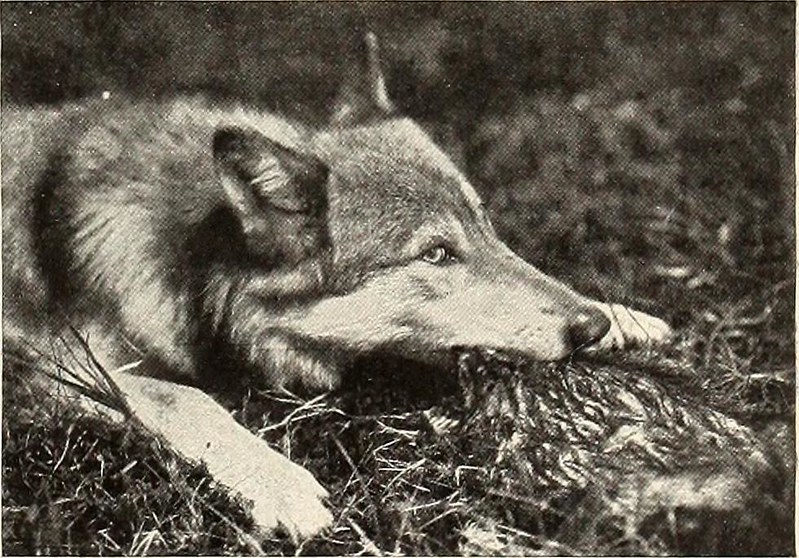The timber wolf is the hardest to identify in the field or classify in a textbook. Apart from the fact that it resides in the Great Lakes region and southeastern Canada, there is little agreement and much speculation.
A timber wolf looks like a large coyote or a small gray wolf in the field. Indeed, several studies have concluded the timber wolf is the product of breeding between the gray wolf and the coyote.
For the same reason, hikers, homeowners, and hunters often have trouble telling the difference between a coyote and a wolf. And so do professional photographers.
As a result, throughout this article, only one recent, confirmed photograph of a timber wolf is used. Quinten Wiegersma, inside the known habitat of the timber wolf, Algonquin Provincial Park, filmed that timber wolf. All other photos are from older government sources to present accurately identified timber wolves.

The timber wolf: Physical description.
The timber wolf is larger than most coyotes; however, see the note below on eastern coyotes to see why this isn’t true all the time. It is also smaller
then the average gray wolf.
Timber wolf females run about 50 lbs, and the males weigh about 70 lbs. Timberwolves are 2-3 feet tall (when measured at the shoulder) and 5 1/2 feet in length.
The timber wolf has fur that is a mixture of cinnamon and grizzled grayish brown. Its chest is always a lighter mix of yellow and white.

Timber wolf diet.
Timberwolves carnivores. They hunt and eat white-tailed deer, moose, and beaver.
Timber wolf communication.
Unlike coyotes, timber wolves sometimes hunt in packs with other unrelated (genetically) wolves. Within a family unit, wolves work together to protect their territory, raise their young, and hunt larger prey. They communicate with each other by howling, barking (usually only by juveniles), whimpering, and snarling.
Wolves also communicate with each other using body language; even humans can easily translate it. For example, a subordinate timber wolf approaches a dominant pack member by tucking its tail between its legs, pinning its ears back, and slinking toward it—ready to submit.
Friendly social equals and mates approach each other with raised heads, tails, and ears. Conversely, disputes between equals, non-pack members, and other threats are greeted with growls and displayed fangs.
A timber wolf howls are longer than coyote howls and noticeably smoother and more profound in their tone. However, the information communicated in these howls is the same for each animal. For example, who is calling, where they are, and the sender’s mood (threatened or unthreatened).

Timber wolf habitat.
The timber wolf lives in deciduous and mixed forests in the southern part of their range and mixed and coniferous forests further north. The timber wolf has a home range as extensive as 100+ square miles.
Timber wolf lifecycle and family.
Eastern wolves live in family packs, typically with an unrelated breeding pair and their pups from previous litters. The average pack size is three to six animals. Unlike any other wolf, which waits as long as 22 months to disperse a pup forcibly, timber wolf pups sometimes disperse at only 15 weeks old.


